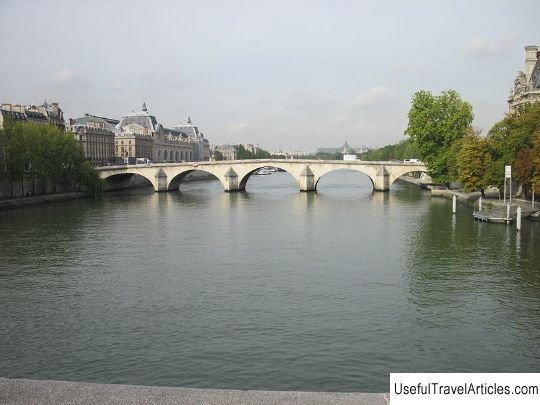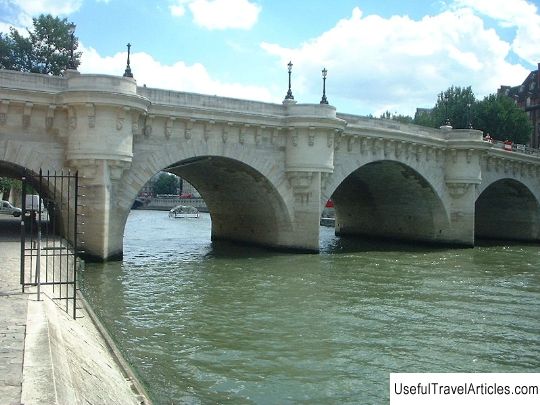Pont Royal description and photos - France: Paris
Rating: 7,9/10 (7688 votes) 
Pont Royal description and photos - France: Paris. Detailed information about the attraction. Description, photographs and a map showing the nearest significant objects. The title in English is Pont Royal. Photo and descriptionPont Royal is one of the three oldest bridges in Paris (the first two are Pont Neuf and Marie). It leads to the Flora Pavilion and the Tuileries Garden on the right bank from the rue Bac on the left. The name of the street recalls that once, back in the 16th century, a ferry departed from this place, transporting stone blocks for the construction of the Tuileries Palace (bac in French means "ferry"). The ferry went eighty-two years, but in 1632 a bridge appeared - the financier Barbier ordered it, and the local businessman Pidou built it. The wooden bridge was red, so it was called Pont Rouge, although it was officially called Pont-Saint-Anne (in homage to Anne of Austria). Something was happening to the bridge all the time. First it was repaired, then it was completely rebuilt, after which it burned, sank, it was reconstructed again, propped up, and, finally, eight of the fifteen arches were blown away by the flood in 1684. Madame de Sevigny, in her famous letters, especially noted the last case, after which it was decided to build a stone bridge. The construction was fully financed by Louis XIV, he also very logically gave the bridge connecting the left bank with the Tuileries Palace a new name - Royal, that is, Royal. The bridge quietly existed for a century, the townspeople loved to spend street parties on it. During the French Revolution, the name was quickly changed - the bridge became National, which is also quite logical. It was here that on the 13th Vendemiere (October 5), 1795, Napoleon placed cannons to defend the National Convention and the Public Security Committee, located in the Tuileries Palace, from the armed royalists. This was a turning point in Napoleon's life. The Commander of the Convent forces, Barras, invited the young general to lead the operation to suppress the mutiny, and after some hesitation he agreed. Napoleon ordered the delivery of forty cannons and occupied the approaches to the Convention with them. The rebels could not do anything against the artillery fire, although they tried to break through from the left bank along the National Bridge and seize the guns that were just near it. Thus, the safety of the Convention and Napoleon's career were ensured, the future of Europe was decided.     We also recommend reading Grotte di Catullo description and photos - Italy: Sirmione Topic: Pont Royal description and photos - France: Paris. |




